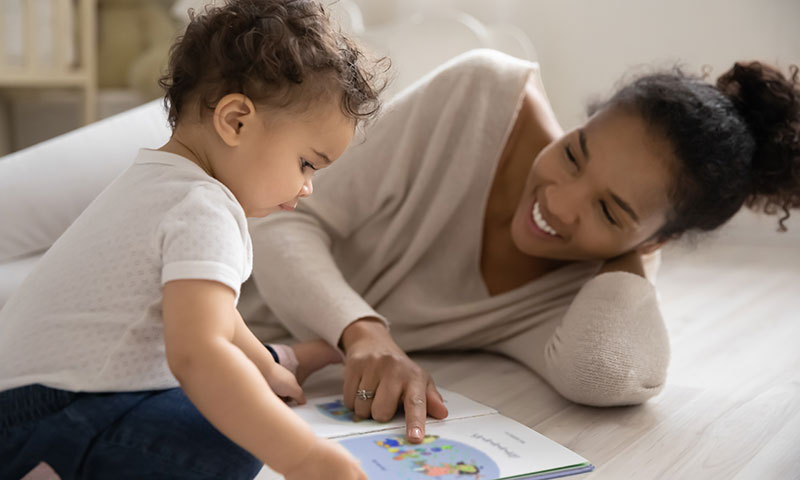1. はじめに:遊びは“ことばの発電所”
幼児期の子どもにとって、遊び=学び です。特に0〜6歳の脳は「楽しい!」と感じた瞬間にドーパミンが分泌され、記憶の定着をつかさどる海馬が活性化します。これは第二言語習得にも当てはまり、drill 型の反復より 遊びを介した自発的アウトプット のほうが、はるかに効率的に語彙と表現を脳に刻み込みます。しかも自宅での遊びは、親子が一緒に過ごす“安心安全”の環境。失敗しても笑ってやり直せるため、情動ストレスが限りなく低い という利点があります。
2. 脳科学が示す「遊び×英語」の相乗効果
- エンドルフィンと記憶の結合
笑ったり体を動かしたりすると分泌されるエンドルフィンは、長期記憶を強化する働きがあります。楽しい遊びの最中に英語を使うことで、単語が“快”の記憶とセットで保存され、忘れにくくなります。 - 運動とシナプス可塑性
鬼ごっこやダンスなどの全身運動は、大脳皮質の血流量を上げ、シナプス可塑性(新しい回路を作る力)を高めます。動きながら発するフレーズは、静的な暗記より最大40%定着率が上がるという研究も。 - ミラーニューロンと模倣学習
子どもは大人の動作と言葉を同時に“ミラーリング”します。親が楽しそうに “Catch the ball!” と言いながらボールを投げるだけで、脳内で視覚と聴覚が同期し、自然な模倣が起こります。
3. 遊びながら覚えるフレーズ30選
使い方のヒント:★マークをつけたら今日の“チャレンジフレーズ”。遊びの前に3回声に出し、遊びの最中に5回以上使うことを目標にしましょう。
| カテゴリー | フレーズ | 意味・場面 |
|---|---|---|
| ①スタートの合図 | 1. “Ready, set, go!”★2. “Let’s begin!” | かけっこ・ゲーム開始 |
| ②鬼ごっこ | 3. “You’re it!”★4. “Tag me if you can!” | 鬼決定・挑発 |
| ③かくれんぼ | 5. “Close your eyes.”6. “I’m coming!”★ | 数える・探索開始 |
| ④ボール遊び | 7. “Catch!”★8. “Throw it back!” | 投げる・返す |
| ⑤ブロック遊び | 9. “Stack it up!”10. “Oops, it fell.”★ | 積む・崩れる |
| ⑥おままごと | 11. “Dinner is ready!”12. “Taste it, please.”★ | 料理完成・試食 |
| ⑦ダンス | 13. “Spin around!”★14. “Freeze!” | 回る・静止 |
| ⑧お絵描き | 15. “Draw a circle.”16. “Nice colors!”★ | 指示・褒める |
| ⑨パズル | 17. “Turn it over.”★18. “It fits!” | 裏返す・はまる |
| ⑩片づけ | 19. “Clean‑up time!”★20. “All done!” | 片づけ開始・終了 |
| ⑪ごっこ遊び | 21. “Welcome aboard!”22. “Tickets, please.”★ | 電車ごっこ |
| ⑫手遊び歌 | 23. “Clap your hands!”★24. “Stamp your feet!” | 拍手・足踏み |
| ⑬実験遊び | 25. “Pour it slowly.”26. “What happened?”★ | 液体を注ぐ・観察 |
| ⑭創作 | 27. “Cut along the line.”★28. “Glue it here.” | ハサミ・のり |
| ⑮フィニッシュ | 29. “Great job today!”★30. “See you next playtime!” | 締めの褒め・次回予告 |
4. おうち遊びアイデア10選(フレーズ活用例つき)
- 新聞紙プール
新聞紙を細く裂いて大きな箱に入れ、“Ready, set, go!” でジャンプイン。 “Find a treasure!” と言いながらおもちゃを探すと語彙が増えます。 - 影絵シアター
暗い部屋で懐中電灯と手を使い、“What animal is this?” “It’s a rabbit!” と当てっこ。 - カップスタッキング競争
紙コップでタワーを作り、“Stack it up!” “It fell!” を連呼。タイムアタック要素で盛り上がる。 - カラー・スカベンジャーハント
家中を歩き回り、“Find something red!” の指示で色探し。見つけたら “I got it!” と報告。 - DIYピザ屋さん
フェルトや紙で具材を作り、“Dinner is ready!” “Taste it, please.” でやり取り。 - 風船バレー
天井に触れないよう “Keep it up!” “Nice save!” と声かけしながら続ける。 - ダンボール電車
箱に乗って “Tickets, please.” “All aboard!” で出発。目的地を英語で設定すると旅気分。 - 氷の宝探し
小物を凍らせた氷を溶かし、“What happened?” “It’s melting!” と実況。 - フォト・ポーズゲーム
音楽をかけて “Freeze!” で停止、カメラで撮影。“Spin around!” で再開。 - 紙皿フリスビー
紙皿に絵を描いて “Throw it back!” “Catch!” でキャッチボール。
5. フレーズ定着4ステップ
- Input(入力):遊びの前に絵カードやジェスチャーでフレーズを提示。
- Imitation(模倣):親が大げさに発音し、子どもにリピートを促す。
- Interaction(相互作用):実際の遊びで5回以上そのフレーズを使う。
- Innovation(応用):子どもが自発的に使い始めたら、新しい単語を足して発展させる。
6. よくある疑問と解決策
- Q:日本語と混ざって変な言葉にならない?
→ コードスイッチは自然現象。意味が通じれば問題なし。むしろ言語意識の柔軟性が育つ。 - Q:発音が心配。親がカタカナ英語でもいい?
→ Perfect is the enemy of done. まずは楽しく続けること。正しい音は歌や動画で補えます。 - Q:兄弟間で日本語ばかりになる…
→ 兄弟専用の“英語秘密コード”を作ると特別感UP。“Only English in the clubhouse!” などルール化。 - Q:遊びがマンネリ化する…
→ 月1回“テーマチェンジ”。宇宙・海・ジャングルなど背景を変えるだけで新鮮さ復活。
7. まとめ:遊びの中の“小さな英語”が未来の“大きな翼”になる
子どもは「楽しい!」の中でこそ、本当に生きた言葉を吸収します。30のフレーズはあくまで入口。親子でアレンジし、笑顔とともに繰り返すことで、英語は知識ではなく体験として刻まれます。今日の1フレーズが、10年後に世界へ羽ばたく翼になる、その可能性を信じて、さあ “Ready, set, go!”
“Let’s Play in English!” 30 Everyday Phrases Your Child Can Learn Naturally Through Home Play
1. Introduction: Play Is a “Language Power Plant”
For young children, play equals learning. When they feel “This is fun!”, dopamine surges, activating the hippocampus and boosting memory retention. In second‑language acquisition, spontaneous output through play engraves vocabulary far more efficiently than mechanical drills. Home play is also a safe, low‑stress environment, where mistakes are met with laughter.
2. Neuroscience: The Synergy of Play and English
- Endorphins and Memory
Laughter and movement release endorphins that strengthen long‑term memory. Words used during fun are stored together with the “pleasure” tag, making them hard to forget. - Movement and Synaptic Plasticity
Full‑body activities increase cortical blood flow and synaptic plasticity. Phrases uttered while moving show up to 40 % better retention than static memorization. - Mirror Neurons and Imitation
Children mirror adult actions and words. Simply saying “Catch the ball!” while throwing it synchronizes visual and auditory input, triggering natural imitation.
3. 30 Play‑Based Phrases
Tip: Mark today’s “challenge phrase” with a ★. Say it three times before play and aim to use it five times during the activity.
(See bilingual table above; phrases 1–30 with meanings and contexts.)
4. Ten Home‑Play Ideas (with Phrase Usage)
- Newspaper Pool – Jump in with “Ready, set, go!” and hunt for toys: “Find a treasure!”
- Shadow Theater – Guess animals: “What animal is this? It’s a rabbit!”
- Cup‑Stacking Race – Build and crash: “Stack it up! It fell!”
- Color Scavenger Hunt – “Find something red!” → “I got it!”
- DIY Pizza Parlor – “Dinner is ready! Taste it, please.”
- Balloon Volleyball – “Keep it up! Nice save!”
- Cardboard Train – “Tickets, please. All aboard!”
- Ice Treasure Hunt – “What happened? It’s melting!”
- Photo‑Pose Game – Music, “Freeze!”, snap, “Spin around!”
- Paper‑Plate Frisbee – “Throw it back! Catch!”
5. Four‑Step Phrase Retention
- Input – Show cards or gestures before play.
- Imitation – Exaggerated parental model, child repeats.
- Interaction – Use the phrase five times in real play.
- Innovation – Child adds new words once phrase is mastered.
6. FAQ & Solutions
- Mixing Languages? Code‑switching is natural; it fosters flexible language awareness.
- Parental Pronunciation? Progress over perfection; supplement with songs/videos.
- Sibling Japanese Dominance? Create an “English secret code” rule.
- Play Getting Stale? Monthly theme changes (space, ocean, jungle) revive freshness.
7. Conclusion: Today’s Small English Sparks Tomorrow’s Great Wings
Children absorb living language only within “fun.” The 30 phrases are just the doorway. Adapt them, repeat them with smiles, and English becomes a lived experience, not mere knowledge. Today’s single phrase may become wings that carry your child across the world in ten years—so “Ready, set, go!”




コメント